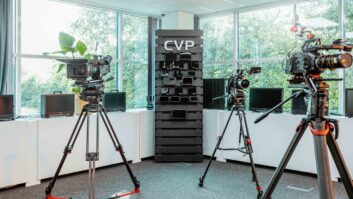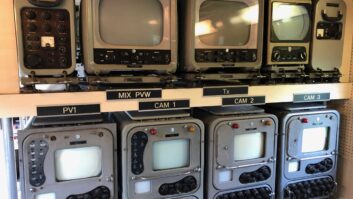The effects of the Japanese earthquake and tsunami are becoming increasingly noticeable in broadcasting, with shortages reported of many pieces of equipment. Recording media have been badly affected, with stocks of HDCAM SR tape in particularly short supply, reports David Fox.
A single HDCAM SR tape (BCT-124SRL) went for $510 last week on eBay, where another seller was offering a box of ten at $1,000 each. Members of the Guild of Television Cameramen across the world report very limited availability of tapes or optical discs, and some production companies have been receiving calls from their dealers asking if they have any unused tape stock they want to sell back.
HDCAM SR is the preferred delivery format for many broadcasters, such as the BBC, ITV and Sky in the UK and CBS, NBC/Bravo and Fox in the US.
“It’s worse than most people know or understand,” stated Mike Thomas, sales director at UK dealer, Top Teks (pictured). “We’ve had deliveries this week which were our first in a month from Sony,” and he doesn’t expect anything substantial until July. Other manufacturers have also been badly affected, and there is generally limited availability of cameras, batteries, lenses and media. “Virtually anything with something Japanese in them is in short supply,” he added.
The east coast of Japan, which was hit hardest by the earthquake and tsunami is home to a lot of semi-conductor suppliers, many of whom are having to rebuild their businesses, and this means that electronics manufacturers around the world have been affected as they wait for supplies to resume or seek replacement parts elsewhere.
Thomas maintains that there is limited availability of all sorts of broadcast media, including SxS and P2 cards, CF and SDHC cards from Sandisk, HDCAM and HDCAM SR tape, and XDCAM discs.
Sony’s tape factory isn’t expected to be back in production until the end of July. The March 11 earthquake and subsequent events initially stopped operations at ten Sony sites and facilities. Manufacturing operations at nine of these sites have since fully or partially resumed. The remaining site, Sony Chemical & Information Device Corporation’s Tagajyo Plant will resume manufacturing soon, starting with optical discs later this month, but magnetic tape manufacturing isn’t expected to recommence until the end of July. Manufacturing of other products and components previously carried out at Tagajyo are being transferred to other Sony facilities.
Thomas expects a lot of price increases this year, as manufacturers have to rebuild factories and/or invest in redesigning cameras, etc., if they move to new components. Sony has already announced price increases, which Thomas expects will be across the board. “Even though Sony assembles a lot of its cameras in Wales, there are shortages. We may get cameras and not viewfinders, or maybe not lenses or batteries. There really isn’t any product that isn’t affected.”
Anyone starting a project soon might have to reconsider how they shoot them. Thomas advises them to look at what media they need first and whether they can get that (especially if it’s tape). “They may end up hiring kit they were going to buy, so costs may go up.” It will mean it is essential to plan ahead earlier.
He has already seen some productions, especially those that would have used HDCAM, changing to file-based solid-state systems because they are available. Although supplies of memory cards are limited, they can be recycled more easily and reliably than tape.
Until now there has been enough buffer stock for productions, “but I think the end of May and June are going to be quite hard.”
There may also be issues with the availability of spares – not just in the short term, but perhaps also in the long term, particularly if manufacturers have to reconfigure the equipment with different components, which might not be completely compatible with existing models.
Many Japanese factories have also been subject to power outages, making it impossible to complete some manufacturing processes.
“It is difficult to find complete kits to put together at the moment,” he said.
Some dealers and rental companies have seen older and less popular equipment becoming more attractive to productions as the shortages affect their first choice. For example, HotCam, a broadcast rental company with offices in the US and UK, has added extra Panasonic HDX900 camera packages to its rental stock to supply demand for alternative cameras.
HotCam’s managing director Trevor Hotz revealed that there was a significant inventory of Panasonic HDX900s that was previously considered “difficult to shift” but was now proving very popular, leading to a fresh investment on its part.
“Producers are worried about missing deadlines due to a shortage of tape stock and are now looking at alternatives,” he said. “To a certain extent it’s directing the market and the upshot is that it is re-vitalizing older stock which hasn’t been as popular of late, like the HDX900s.” The 900s are DVCPRO HD camcorders that record at 100Mbps and were first released in 2006.







